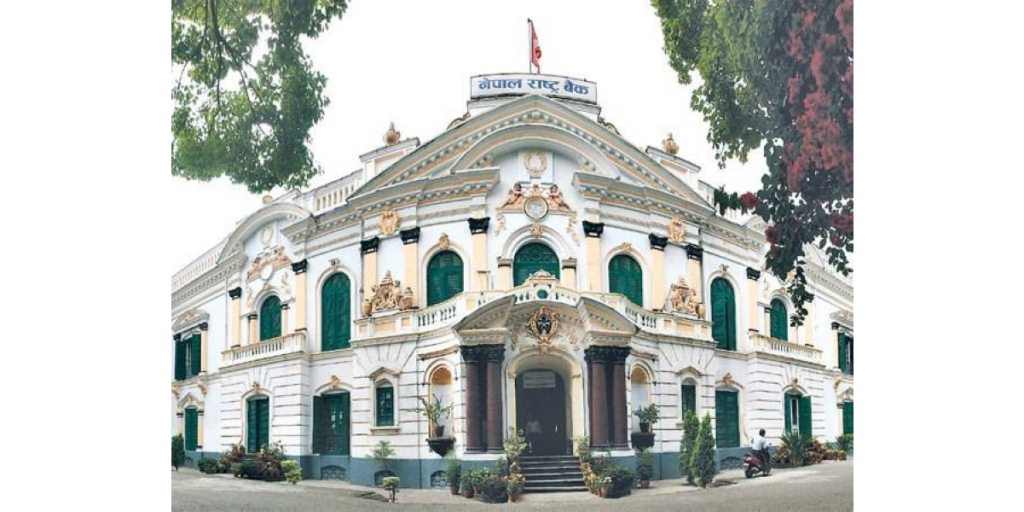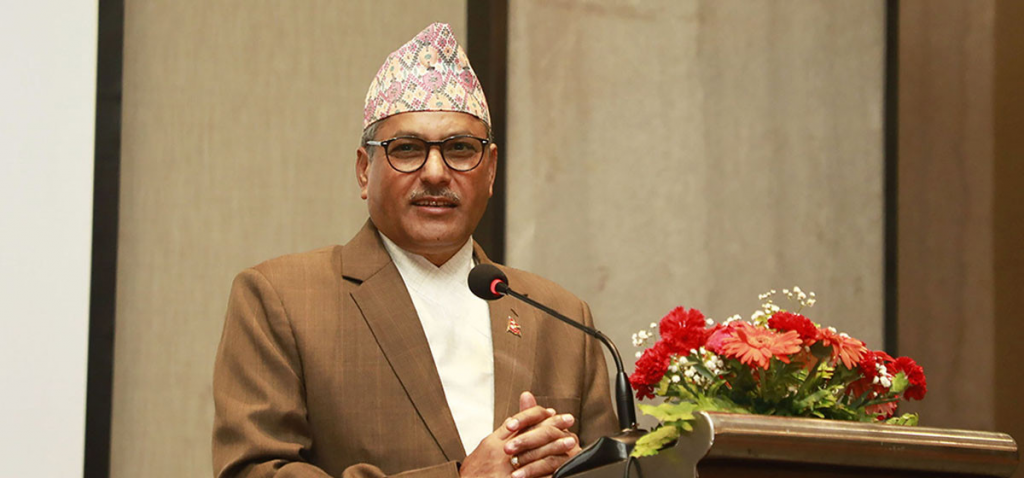 The Nepal Weekly
The Nepal Weekly  July 30, 2024
July 30, 2024
Nepal Rastra Bank Governor Maha Prasad Adhikary on Friday launched the Monetary Policy for the fiscal year 2024. While unveiling the new monetary policy NRB has taken some flexible measures to facilitate cash flow in certain sectors including construction and share transactions.
Launching the new monetary policy, Governor Adhikari said that a flexible monetary policy has been carefully given continuity to make the economy dynamic by taking into account the stable prices and the external sector situation. “The regulatory system has been designed to maintain financial stability while emphasizing on lending to the productive sector and improving the quality of credit.”
Bowing to the pressure from the government and private sectors, the autonomous apex monetary authority, however, has introduced its major policy framework to benefit specific players of the economy. While expressing their dissatisfaction with the government budget for the current fiscal year, stakeholders with their long wishlists turned to the central bank’s policy.

According to Governor Adhikari the central bank revised the upper limit of the interest rate corridor to 6.5 percent from the earlier seven percent, while maintaining the lower limit unchanged at three percent. The policy rate has been reduced to five percent from 5.5 percent.
A reduction in policy rates could help banks to maintain more liquidity while lowering their credit costs. It is used to boost investment in the economy; however it could invite inflationary effects.
The NRB has stated that while continuing the provision of the Standing Liquidity Facility (SLF) at the bank rate, the conditions for providing the SLF will be made flexible. Likewise, the existing provisions regarding the mandatory cash reserve ratio (CRR) and statutory liquidity ratio (SLR) to be maintained by the banks and financial institutions (BFIs) have been left unchanged.
The NRB has adopted a flexible policy mainly for the construction sector that was in a slump in the last fiscal year. The monetary policy has extended the deadline for the payment of principal and interest on loans disbursed to construction entrepreneurs till November 2024.
Similarly, the construction businesses will not be blacklisted only on the ground of issuing fraudulent cheques until further arrangements regarding credit information. “The bank guarantee of the contractors will automatically be renewed provided the government authorities extend the deadline of a contracted work. Likewise, the contractors working in joint ventures will not be obstructed in bank-related services even if one of the partners is blacklisted due to some reasons,” reads the monetary policy.
The central bank, which has been blamed for the current economic slowdown due to its restrictive measures on imports two years ago, now turns flexible on promoting imports. It has increased the threshold to provide foreign exchange to US $50,000 from US $35,000 while settling import bills by using draft and Telex Transfer. Provided the payment for imports is made through ‘Document Against Payment’ and ‘Document Against Acceptance,’ the limit is extended to US $100,000 from US $60,000.
In order to reduce pressure on the capital adequacy ratio (CAR) of the BFIs, the monetary policy talks on promoting new tools of CAR. Reducing the upper limit of the Regulatory Retail Portfolio to Rs 25 million from Rs 20 million, lowering the loan loss provision on performing loans to 1.10 percent from 1.20 percent and allowing the BFIs to consider certain amounts in regulatory reserve to count in Tier 2 Capital are among the measures that the central bank has considered in this regard.
The NRB has targeted to reduce the dependency on loans issued by the BFIs in the share market while enhancing margin trading in the segment. Through the monetary policy, the central bank has removed the Rs 200 million cap on loans provided by banks and financial institutions for margin trading in share securities.
Major highlights:
– Provisioning requirement for performing loans reduced from 1.20 percent to 1.10 percent.
– Policy rate reduced from 5.5 percent to 5 percent.
– Upper limit of the interest rate corridor reduced from 7 percent to 6.5 percent
– Target for private sector lending increased from 11.5 percent to 12.5 percent
– Removal of the cap of Rs 200 million on margin loans for institutional investors
– No change in CRR and SLR.
– Facilitation to refund up to Rs 500,000 of small depositors using the assets of cooperatives’ operators and their family members as collateral.
– Expansion of subsidized loans of up to Rs 20 million to agriculture equipment manufacturing, information technology and tourism.
Chandra Prasad Dhakal, president of the Federation of Nepalese Chambers of Commerce and Industry, has termed the monetary policy as positive. “It will help rejuvenate the economy that has been reeling under a slowdown for a long time,” he said.
“The target to increase private sector lending to 12.5 percent from 11.5 percent, the initiative to revise loan loss provision, the expansion of the limit of foreign currency use on imports and the removal of the cap on margin lending to institutional investors are among the positive moves,” remarked Dhakal.
Hotel entrepreneurs have, however, expressed their reservation over the monetary policy. Binayak Shah, president of the Hotel Association Nepal, said the monetary policy does not mention about any program for hotel businesses. “Many hoteliers who were adversely affected by the coronavirus impacts are still struggling to maintain their financial situations,” pointed out Shah.






